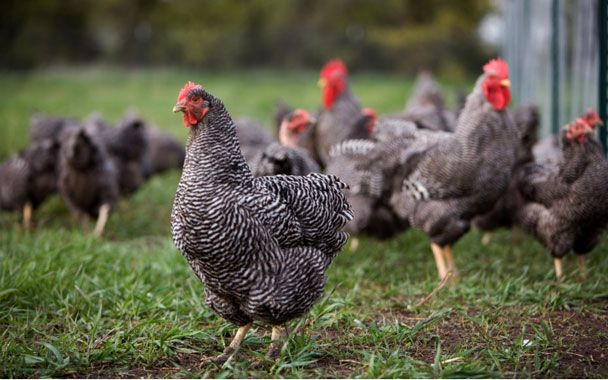Meet Your Meat’s Maker
It’s been a long time coming, but as of yesterday, meat sold by large grocery retailers will have to bear labels telling you in which country the animal was raised.
I say a long time coming because the requirement that poultry, meat, and seafood had to be labeled was first passed into law in 2002. But in the face of lobbying (and tens of millions of dollars of campaign donations) from big processors and trade groups like the Grocery Manufacturers Association, a little thing like the passage of a law through Congress meant nothing. Fish and seafood have sported country-of-origin labeling since 2005, but meat and poultry have avoided complying. The latest, and most cynical, barrier was erected by Henry Bonilla, a Texas Republican, who shoe-horned through measures that forbade the Agriculture department from spending money to implement the law. That obstacle was removed with the passage of the Farm Bill this summer. Now, finally, meat, poultry, seafood, and produce will all sport labels revealing where they came from.
Mind you, there are still some mighty big holes in the legislation. Any food that is cooked or processed before being packaged is exempt. And interestingly, in the case of ground beef, countries whose cattle contributed to the meat must be on the label (yes, a single pack of hamburger can contain material from animals raised in several countries), but they need not be listed in the order of the percentage they represent.
Still, on issues related to consumers’ right to know, I’ll settle for small steps, as long as they are in the right direction.
Keeping Sushi Chefs Honest
Trevor Corson posted an interesting piece on this site recently pointing out that sushi chefs in general have a poor record compared to other seafood cooks on the issue of using sustainable products. Indeed, two sushi staples, farmed salmon and tuna, particularly bluefin tuna, rank at the very top of environmental groups’ “avoid” lists.
Corson profiled a couple of environmentally conscientious chefs who are bucking the trend. But in the next few weeks, raw-fish lovers will have three powerful new resources at their fingertips (literally) to allow them to make their own informed choices at the sushi counter, even if the person wielding the knife doesn’t factor the status of fish populations into handrolls.
The Monterey Bay Aquarium, the Blue Ocean Institute, and the Environmental Defense Fund—all major environmental organizations—announced last week that they were simultaneously releasing consumer guides ranking popular sushi items based on whether they are made from seafood that is harmful to the environment and/or to human health. The guides, which differ little in substance, will be available in print, online, and as versions that can be downloaded to mobile devices. They will be available by Oct. 22.




 Pinterest
Pinterest


